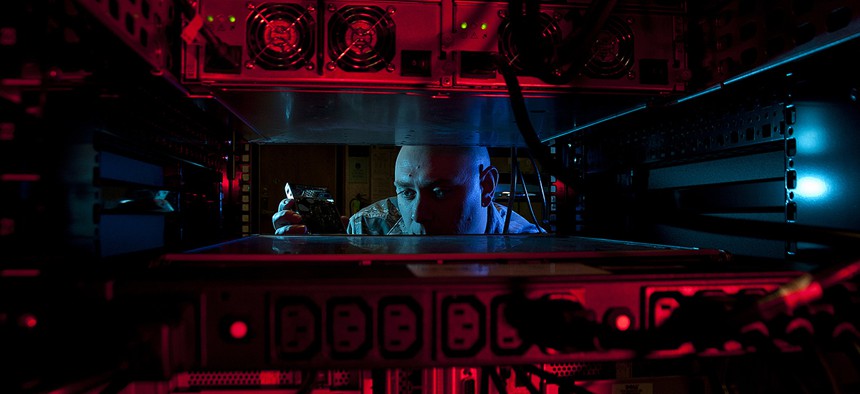Pentagon Aims to Revamp Global Command and Control System

U.S. Air Force Staff Sgt. Jerome Duhan, a network administrator with the 97th Communications Squadron, inserts a hard drive into the network control center retina server at Altus Air Force Base, Okla. Defense Department
DOD is looking specifically at deploying data in cloud-and mobile-based environments.
The Defense Department is looking to industry for how it might modernize its Global Command and Control System.
GCCS is essentially the operational architecture, including hardware, software, standards and applications, which provides situational awareness and worldwide connectivity to all levels of U.S. armed forces command.
In a request for information, the Defense Information Systems Agency – the Pentagon’s IT arm – seeks industry insights for the “modernization and development of GCCS capabilities” based on “open standards” that can be deployed in a multitude of new operational environments.
The RFI specifically asks for information related to deploying data in cloud-and mobile-based environments, and how to “enhance functionality, implement new requirements, increase efficiency, and lower operating and deployment costs through the employment of new and emerging technologies.”
A large portion of the RFI signals the importance the Pentagon has placed on geospatial information and “big data techniques and technologies” including situational awareness, missile defense and logistics. It calls for improved data processing and visualization tools that can provide near real-time military operations data on large-screen operations centers, desktops and even tablets and smartphones.
DOD “is seeking the development of enterprise services for the consumption, decoding and encoding, analysis, correlation, fusion and distribution of command and control data utilization big data techniques and technologies and cloud (computing) patterns including platform-as-a-service and infrastructure-as-a-service,” the RFI states.
Importantly, all services would be required to support classified and unclassified networks and “should address” secure mobile use cases, including warnings and alert notifications.
Industry responses are due by Jan. 18 in the form of white papers no longer than 15 pages.
The RFI is another indicator of the Pentagon’s intent to modernize its IT systems along the framework outlined in the Joint Information Environment. For the past few years, DOD has explored the use of other modern technologies like cloud computing to determine their mission effectiveness.
NEXT STORY: Video: Honey, I Shrunk the Satellites!



